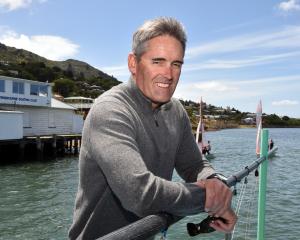The government's zero-fee policy for new tertiary students has increased administration costs, but is having little impact on enrolments, universities say.
Universities told RNZ News their staff had spent extra time explaining the zero-fee scheme to students and some had also had to change their IT systems.
The vice-chancellor of Auckland University of Technology (AUT), Derek McCormack, said its enrolments were about the same as last year, but the cost of the enrolment process had gone up.
"We've had to take on staff, it has been more complex. We are hoping that we will receive some compensation for that and we're waiting to know the outcome," he said.
Mr McCormack said the increased cost was not huge, but universities were struggling to cope with rising costs and government funding that had declined in real times.
The director of planning and information at the University of Auckland, Pamela Moss, said its enrolments had not increased, but the zero-fee policy had caused significant costs, especially in IT.
"At the end of January, we'd spent 300 IT hours to deal with this.
"I expect that we've spent at least another 100 hours, and then all of the ongoing cost where we would otherwise have been doing something else but we're having to deal with the management of this process."
At the University of Waikato, enrolments from school leavers were very slightly up on last year, and the number of older students applying for the first time had also increased.
But the senior deputy vice-chancellor Alister Jones said it was too early to tell if the zero-fee policy was responsible.
"Our applications are up were up over all but it would be hard to say that is to do with the fees," he said.
"Students are applying for more universities now at the initial stages so it's hard to know whether they've enrolled one university, two universities, three universities and then taking up one of those."
Professor Jones said the policy had confused some students, and university staff had spent more time providing advice.
"There's been some confusion about who is eligible, what they need to apply for from a Studylink point of view. We found some students were delaying their enrolment because they were unsure if they had to enrol with the free fees."
At the University of Canterbury vice-chancellor Rod Carr said it appeared likely the university would have more students this year than last year but it was not clear if that was because of the government's policy.
The increase included more Christchurch school-leavers choosing to remain in the city, and more students moving to Christchurch from Wellington and Auckland.
Education Minister Chris Hipkins said there were no plans to reimburse institutions for the increased administration costs caused by the new policy.
"To help providers manage any potential increased cost pressures, the Tertiary Education Commission has paid all Fees Free funding in bulk. A total of $226.1m excl GST has been paid to TEOs," he said.
Mr Hipkins said it was too early to know how many people would benefit from the scheme but by 20 February nearly 315,000 people had visited the [www.feesfree.govt.nz fees-free website.]
"Forecasts are that it will start to slow the decline in enrolments we've inherited from the previous government and will build again from there," he said.
However, Mr Hipkins said increasing enrolments was not the only goal of the scheme. It would also decrease government spending on the Student Loan Scheme.
"Treasury estimate there will be a $434 million reduction in capital spending over the next five years as students borrow less overall, even as student loan living cost payments increase."












